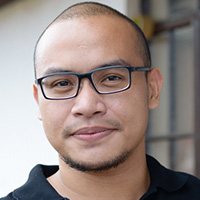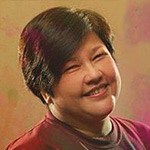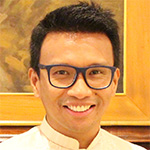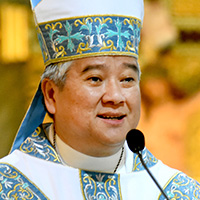
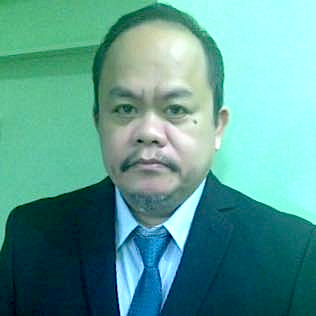
Some legal analysts contend that I should have exhausted legal remedies in the Philippines before I went to the ICC. They faulted me for failing to exhaust domestic legal remedies. Some even misleadingly said that I should have resorted to a legal remedy before the courts.
But the prevailing system in the ICC is “complementarity.” It is not “exhaustion of legal remedies.” Exhaustion of legal remedies is completely different from complementarity. To say that there should have been an exhaustion of legal remedies in the domestic front by me is to betray a complete ignorance of the true nature of complementarity. (WATCH: The International Criminal Court process)
Complementarity places the primary obligation on the State party to investigate. This obligation exists even if no person asks for an investigation. In other words, the State party must investigate with or without any person seeking an investigation. It is, therefore, the Duterte government that must pursue an investigation against Duterte himself for crimes against humanity, with or without me or Edgar Matobato seeking an investigation.
Exhaustion of legal remedies is a familiar legal concept in domestic law, imposing on a person a legal duty to first exhaust administrative remedies. Corollarily, the failure to do so will result into a rejection of a subsequent resort to judicial action. In effect, a court cannot intervene if there is no prior resort to and exhaustion of an administrative remedy.
However, such familiar concept has nothing to do with the ICC. If that concept were to be applied in the ICC, an absurd situation will arise where the ICC cannot exercise jurisdiction simply because a State party permanently fails or refuses to investigate. This can happen in a situation where, as in our case, the government itself is complicit in the crime. Since the ICC has to wait for the state party to act, which could take an eternity, there is no possible way that the ICC can intervene.
Complementarity is precisely meant to avoid a legal paralysis on the part of the ICC. While the ICC respects state sovereignty which includes primarily the power to punish crimes, state sovereignty must be balanced with the goal of ending impunity. Thus, by way of compromise, if the state party fails or refuses to investigate, then the ICC need not wait for eternity, but rather can immediately intervene in the exercise of its complementary jurisdiction.
Complementarity has already been settled by the ICC in an early case. The settled meaning of complementarity in the ICC is that (1) when there is an absence of a national investigation, or (2) when the investigation is rendered “inactive,” or (3) when the action of the state party is meant to enable the ICC to come in – all for the purpose of shielding the person being charged before the ICC, in this case Duterte, from criminal liability – the ICC must exercise its complementary jurisdiction.
It is true that when the criminal justice system of a state party is completely non-functional, the ICC is justified in its complementary jurisdiction. But this legal standard applies only in times of war and armed conflicts where understandably a shooting war will scare judges, lawyers, and court personnel, and prevent the courts from functioning.
In times of peace, like ours, the standard is whether or not the state party is unwilling or unable to investigate. If it is any indication, in certain situations like in Uganda, Democratic Republic of Congo, Ivory Coast, and Kenya, the ICC exercised its jurisdiction even if national courts were functioning.
In the specific case of Uganda, the ICC exercised jurisdiction because an earlier amnesty posed a legal bar to a domestic prosecution. This could be akin to a presidential immunity in favor of a sitting president in our legal system, which is a similar bar to domestic prosecution. This therefore justifies the exercise of an ICC jurisdiction.
It is argued that the ICC case is barred by certain cases in the domestic front, namely: the case on the Oplan TokHang pending in the Supreme Court, amparo proceedings filed by private individuals, and criminal investigations against policemen.
This is erroneous, because these cases do not target the criminal liability of Duterte himself who bears the greatest criminal responsibility as mastermind of the death squad killings. These cases are, therefore, not legal obstacles to the case in the ICC which specifically pertains to Duterte’s criminal liability itself.
The Senate rendered “inactive” its inquiry on extrajudicial killings. It could have referred, but did not refer, the matter to the Department of Justice. Duterte’s supermajority allies were acting like Pontious Pilate who, out of fear, washed his hands by letting the mob decide instead the fate of Jesus Christ.
By their inaction, the Duterte allies appeared to enable an investigation to be done by the ICC instead. By and large, it was a national cover-up to shield Duterte from criminal liability in the domestic front.
Congressman Gary Alejano filed an impleachment complaint against Duterte. A political process, they could have investigated Duterte and eventually opened a national criminal investigation. But his allies in Congress just unceremoniously threw out the complaint, with the same intention of cover-up.
In short, there is an absence of political will to investigate, because Duterte himself is the mastermind of the death squad killings, which stands as the ultimate reason for the failure, up to now, of the present Duterte regime to even just commence any genuine investigation against Duterte himself.
Under this reprehensible situation where we have a president protected by his minions in a death squad regime, complementarity clearly applies as a matter of justice.
Duterte is the head of a death squad regime which includes the Department of Justice headed by Secretary Vitaliano Aguirre II, the long-time lawyer of Bienvenido Laud, along with now Executive Secretary Salvador Medialdea in the Ernesto Avasola case.
These two key supporters of the Davao Death Squad obstructed the search of human skeletal remains in the Laud quarry. Dante Gierran, the head of the National Bureau of Investigation, and Philippine National Police chief Bato de la Rosa are also complicit in the Davao Death Squad.
When a group including Arturo Lascañas fetched Aguirre at the Davao airport to represent Laud, Aguirre reminded Laud to clear the quarry of all the skeletal remains, but Laud said not all skeletons could be located anymore. Aguirrre suggested to just claim those skeletons as being from dead Japanese soldiers in World War II.
This is not to mention that in a meeting in Duterte’s house in Davao attended by Lascañas himself, I was told that then mayor Duterte shelled out a very substantial amount to pay for heavy equipment intended to clear the Laud quarry of the human skeletal remains buried by the Davao Death Squad in the said place.
Indeed, in a regime made up of key supporters of the Davao Death Squad, it is well-nigh impossible for Duterte to be investigated. How can this regime investigate Duterte himself who will, in the first place, simply obstruct any such investigation, just like what he did in Davao City?
How can this regime investigate Duterte himself when he instigated police killings, scoffed at calls to investigate, issued public threats to slap Agnes Callamard whom he described as “undernourished,” and even demeaned ICC prosecutor Fatou Bensouda whom, in a supreme racist slur, he called a “black lady”?
It is the height of wishful thinking for anybody to even think that Secretary Aguirre will investigate Duterte himself, considering that he has been a long-time lawyer of Duterte and his Davao Death Squad. Up to now, despite urgings from different sectors, including the European Parliament and the UN Human Rights Council, there is no national criminal investigation launched by Aguirre against Duterte himself. In fact, there never will be one.
Under this reprehensible situation where we have a president protected by his minions in a death squad regime, complementarity clearly applies as a matter of justice. If the ICC has to wait for the Duterte regime to investigate – which is not forthcoming at all – the ICC will never be able to act.
There is no other way for international criminal justice, therefore, to move forward. In the absence of any national criminal investigation against Duterte himself, the ICC is duty bound, and will have, to exercise its complementary jurisdiction to attain international criminal justice. – Rappler.com
Lawyer Jude Josue L. Sabio filed a mass murder complaint against President Rodrigo Duterte before the International Criminal Court in The Hague, The Netherlands, in May 2017. He is the lawyer of self-confessed Davao Death Squad hitman Edgar Matobato.

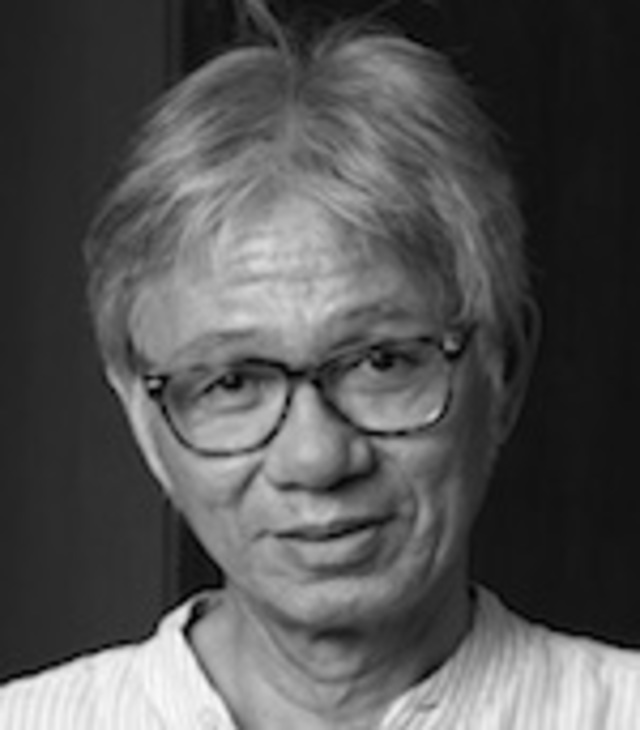








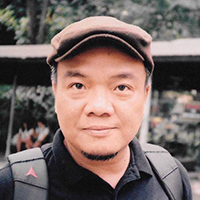 Comelec lang naman yata ang naniniwalang 90 araw ang panahon ng kampanya para maging senador, 45 araw para sa lokal na posisyon, at 10 araw pababa para sa opisyal ng barangay. Ang buong sambayanang nakakakita at nakakabasa ng nakaiiritang tarpaulin sa paligid nila, hindi.
Comelec lang naman yata ang naniniwalang 90 araw ang panahon ng kampanya para maging senador, 45 araw para sa lokal na posisyon, at 10 araw pababa para sa opisyal ng barangay. Ang buong sambayanang nakakakita at nakakabasa ng nakaiiritang tarpaulin sa paligid nila, hindi. 
 I suppose I should be angry at Harry Roque’s comment about “expiring women”.
I suppose I should be angry at Harry Roque’s comment about “expiring women”.


